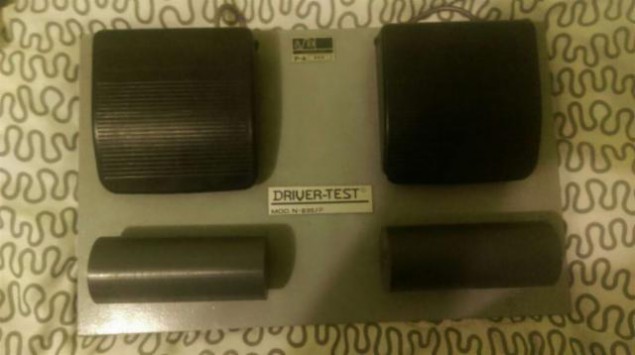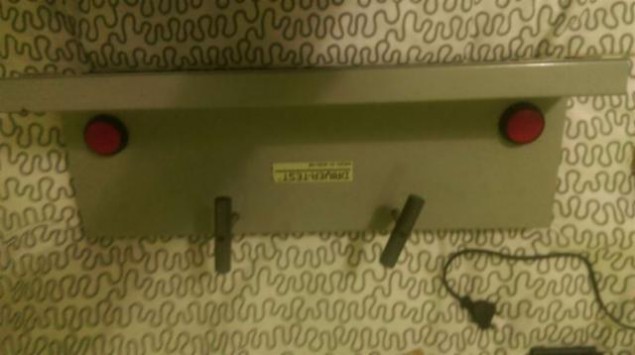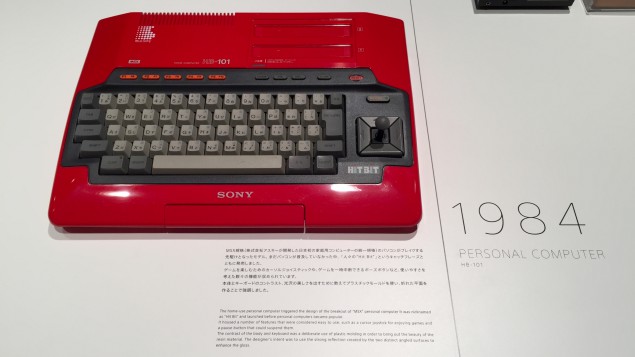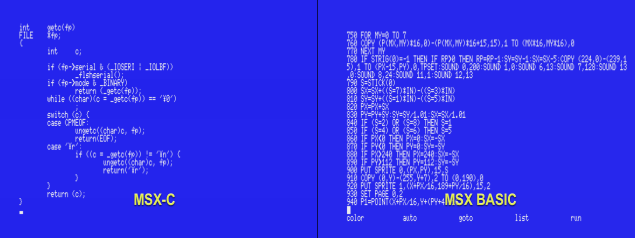Last night I learnt that Ángel Cortés has just passed away. He was 58 years old, and one of the pioneers of Internet in Spain.
We first met in the early 90s, years before Internet access became popular or even easily available in Spain. At the time he was running NeXuS MSX BBS from his home, the only BBS in the country dedicated to MSX computers. I used to dial into his BBS from my MSX2 computer using a 300 bps modem. With his help I later started my own BBS and FidoNet node (LuzNET 2 BBS, 2:343/163).
During the late 90s we worked together at Intercom, back then one of Spain’s biggest Internet service providers. There he started Noticias Intercom, which later became noticias.com. It was one of the biggest news site in Spanish. He also started noticies.com, one of the first news sites in Catalan.
In 2002 he left Grupo Intercom. He asked me for help to start his own news portal: NoticiasDot. We actually ran the whole thing from a server in my Tokyo apartment for about two years, until we moved everything to a hosting company. I was helping him with all the technical stuff until around 2008.
In short, he’s the person who introduced me to computer networks and communications. If I hadn’t met him I probably wouldn’t be where I am today.
Thanks for everything, Angel.
A rarely seen MSX computer
Posted by Javi Lavandeira in Fun, Hardware, MSX, Retro, Technology | May 27, 2015This is an interesting find. Let me give you some background first:
In order to get your driver’s license in Spain you need to pass a test called psicotécnico. This test is designed to ensure that your hand-eye coordination and response times are normal. When I took the test many years ago, it consisted on a computer attached to a couple of foot switches and a couple of handles. On the screen there were a couple of bars that you could move horizontally independently from each other using the handles. The screen kept scrolling down simulating a couple of roads, and your mission was to keep both bars inside the road at all times.
The Spanish government ordered these systems exclusively from a company called ASDE (and they still do).
What’s interesting is that the computer they used was an MSX2. When I took the test they had a Philips NMS8245, but it seems that they also used computers from Sony. Everybody who got a driver’s license in Spain in the 80-90s had to go and play with this MSX.
Today somebody on Facebook found this: there’s one of these units for sale, complete with the controllers and software (a cartridge screwed into the top slot):
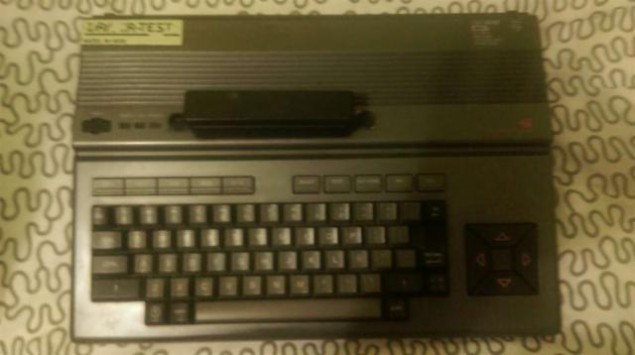
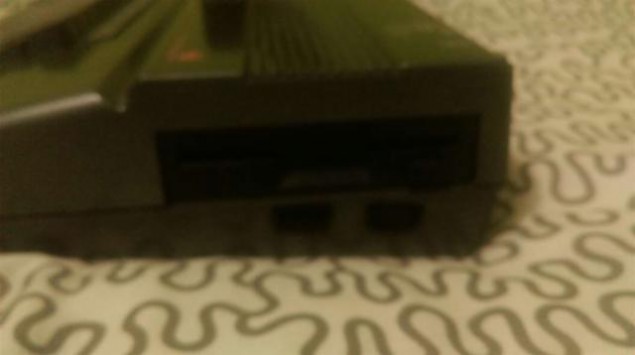
Nowadays these machines aren’t in use anymore. They’ve been replaced with a newer system, but it seems that the controllers are basically still the same:
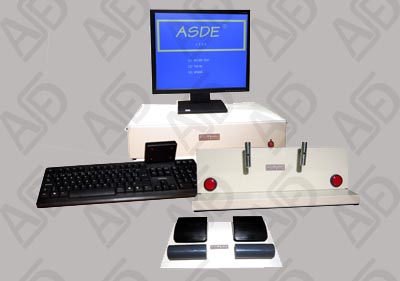
The new Driver-Test set. Probably running on a custom-built PC.
Here’s a video of a test in progress. The MSX version was exactly the same:
Seeing this machine brought back some nice memories. :-)
Update: a friend on Facebook reports that these MSX are still in use in some examination centers.
Japanese books for retro computer fans
Posted by Javi Lavandeira in Hardware, Japan, MSX, Retro, Technology | May 25, 2015During a conversation on Facebook earlier today I mentioned a couple of books by Japanese author Hiroyuki Maeda, and I promised to post more information later. These books are for retro computer fans, even those who can’t understand Japanese. Mr. Maeda has published several books about retro computers and game consoles, but in this post I’ll talk about two of them:
- 懐かしのホビーパソコンガイドブック (The Nostalgic Hobby PC Guidebook, ISBN 978-4-7755-2339-1)
- 海外のゲーム&パソコンガイドブック (The Oversea’s Game & PC Guidebook, ISBN 978-4-7755-2419-0)
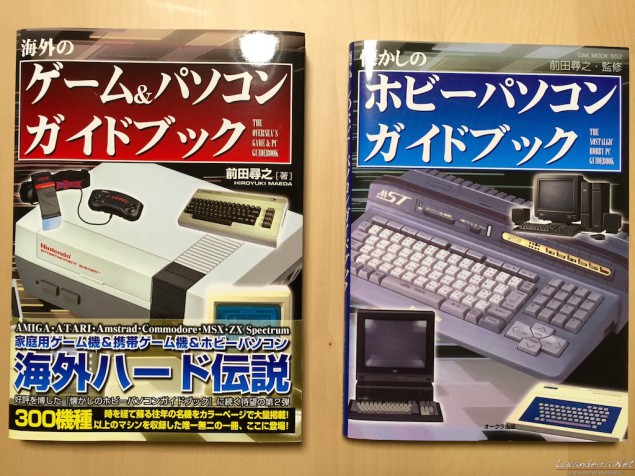
Left: The Oversea’s Game & PC Guidebook. Right: The Nostalgic Hobby PC Guidebook.
These books contain lots of information about hundreds of computer systems and consoles from the late 70s to the early 90s. Keep reading for a taste of what’s inside
Read more ›Restoration and whitening of a Panasonic FS-A1ST
Posted by Javi Lavandeira in Hardware, How-to, MSX, Technology | May 08, 2015I posted about this on my Facebook account a few days ago and several people asked for more photos and a followup, so here it is.
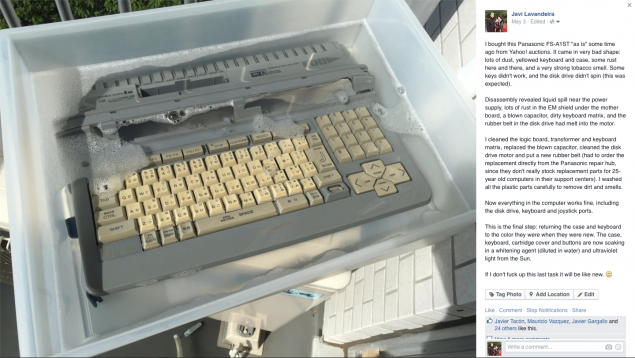
My Facebook post from May 3rd.
Background
Some time ago I bougth a Panasonic FS-A1ST computer on Yahoo! Auctions. The description said that the unit was “as is” and that it wasn’t guaranteed to work properly. The photos were a bit dark, but there wasn’t any obvious physical damage. The price wasn’t high, so I bid on it and I won.
The package arrived a few days later. I couldn’t wait to open the box and try it (I had been without an MSX turbo R for quite a while), but my happiness vanished quickly: the computer came in a terrible shape. It was very dusty, and both the case and keyboard had yellowed a lot, not to mention the tobacco smell.
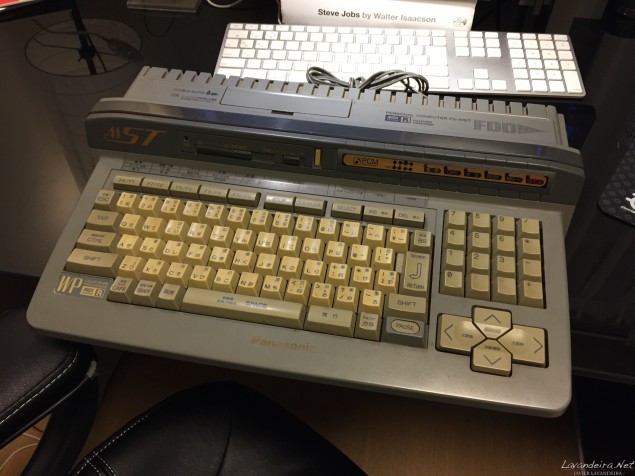
The computer as it arrived. Because of the bad light it doesn’t look as bad in the photo as it did in real life.
Sony Design exhibition in Ginza: MAKING MODERN
Posted by Javi Lavandeira in Culture, Design, Japan, MSX, Retro, Technology | May 06, 2015If you’re following me on Facebook or Twitter then you already learnt about this earlier today:
This morning we went to Ginza for some important shopping, and afterwards we headed for the Sony Building. The reason: an exhibition opened there last week about the design of Sony products, and they have on display one of the coolest-looking MSX computers ever produced: a red HIT-BIT HB-101.
Sony Design: MAKING MODERN
Place: Sony Building (8th floor), Ginza
Admission fee: Free
Companion book: Sony Design: Making Modern
Held from April 29th to June 14th, 2015
Relearning MSX #18: Structure of an MSX-C program
Posted by Javi Lavandeira in MSX, Retro, Technology, Uncategorized | March 20, 2015In the last post we saw a very brief example of command line parameters, and we learnt about input/output redirection and pipes.
This week we’re going to see the structure of a program written in C. This post is intended as an introduction for users who haven’t programmed in the C language before. If you have coded anything in C before then you can completely skip it.
A few characteristics of C programs
If you’ve been an MSX user for a long time then it’s likely that you’ve seen lots of MSX BASIC programs. If that’s the case, then you’ll immediately notice several differences:
Read more ›Relearning MSX #17: Command line parameters, redirection and pipes
Posted by Javi Lavandeira in MSX, Retro, Technology | March 13, 2015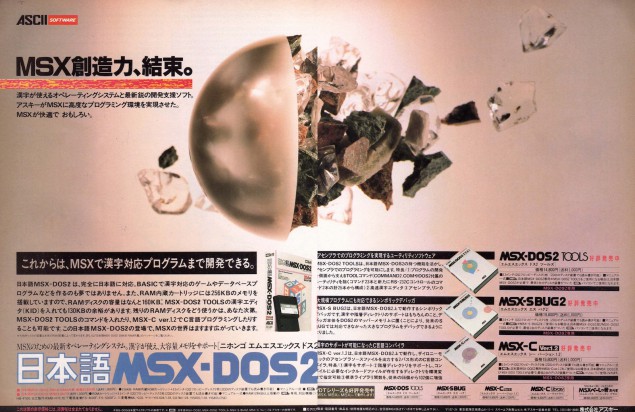
We now have a working installation of the MSX-C compiler. We saw a very simple test program in chapter 12, and this week we’ll compile a program that actually does something.
We’re going to learn about:
- Command line parameters
- Input/output redirection
- Pipes
Along the way we’re also going to see some common compile-time errors and how to resolve them. This post doesn’t require or assume any previous programming experience. The content and example programs are based on chapter 4 of the book MSX-C入門上巻 (“Introduction to MSX-C, first part”) edited by ASCII Corporation in 1989.
Before we start go get something to drink. This is a long post.
Read more ›Index of technical articles on MSX Magazine
Posted by Javi Lavandeira in MSX, Retro, Technology | March 12, 2015For my own reference I’ve compiled a list of all the technical articles that appeared in the Japanese MSX Magazine published by ASCII between 1983 and 1992. These articles are a fantastic source of information on the MSX architecture and how to develop software and hardware for it, even without previous knowledge of programming or electronics.
I have entered the article titles as they are, because this index won’t be very useful to you anyway if you can’t read Japanese.
Download it here:
- msx_magazine_articles.pdf (197 KB)
All of the MSX Magazine issues have been available for some time at the Internet Archive. This search will find most of them.
It’s been a while since the last post. This one isn’t technical at all. I’m just going to explain where we’re going from this point. Also, starting this week I’m setting a fixed schedule: one new post every Friday. This should keep you (and me) busy.
In the next posts we’re going to follow the Introduction to MSX-C (MSX-C入門) books published by ASCII. Both have been out of print for a long time, but they can still be found from time to time in Japanese second hand book stores and auctions. We’ll see everything in these books until we complete them, and then we’ll go to more technical stuff.
PDF versions of these were distributed with the MSX Magazine Revival issue #3 (MSXマガジン永久保存版3) in 2005. Both PDFs have been available online on the Internet Archive for some time (see links below).
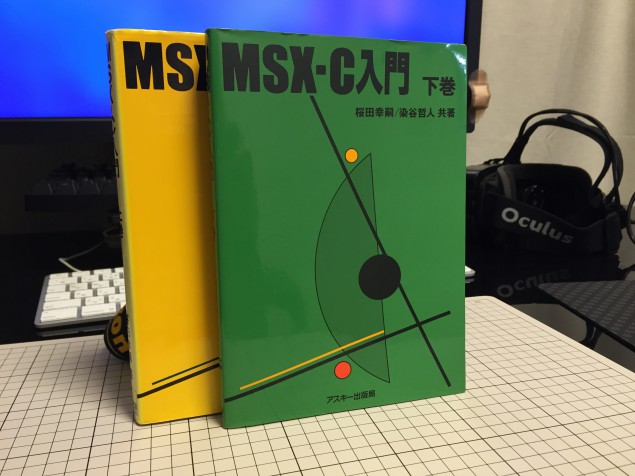
Introduction to MSX-C (Yellow: first part, Green: second part)
Relearning MSX #15: MSX-C commands: CG.COM
Posted by Javi Lavandeira in How-to, MSX, Retro, Technology | February 18, 2015In the previous two posts we’ve seen a detailed description of CF (MSX-C’s parser) and FPC (MSX-C’s function parameter checker). Today we’ll see the last one: CG.COM, MSX-C’s code generator.
What I said about the previous two articles applies to this one as well: this explanation is for experienced users who want to have more control over the compile process. If you’re a beginner then you don’t need to bother paying too much attention to this (yet). However, it won’t hurt to at least skim it and find out what are the available options.
Read more ›

